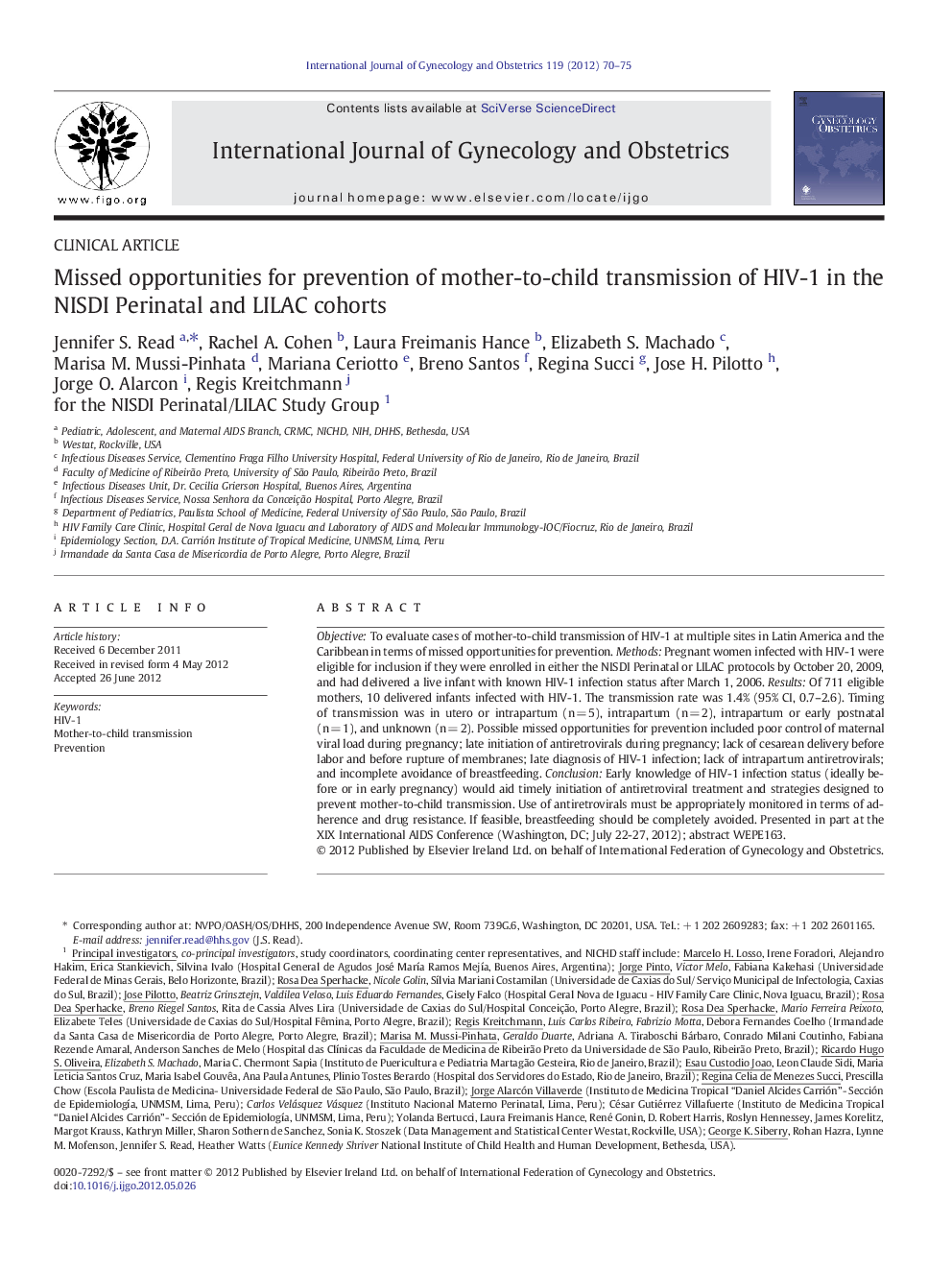| Article ID | Journal | Published Year | Pages | File Type |
|---|---|---|---|---|
| 3951225 | International Journal of Gynecology & Obstetrics | 2012 | 6 Pages |
ObjectiveTo evaluate cases of mother-to-child transmission of HIV-1 at multiple sites in Latin America and the Caribbean in terms of missed opportunities for prevention.MethodsPregnant women infected with HIV-1 were eligible for inclusion if they were enrolled in either the NISDI Perinatal or LILAC protocols by October 20, 2009, and had delivered a live infant with known HIV-1 infection status after March 1, 2006.ResultsOf 711 eligible mothers, 10 delivered infants infected with HIV-1. The transmission rate was 1.4% (95% CI, 0.7–2.6). Timing of transmission was in utero or intrapartum (n = 5), intrapartum (n = 2), intrapartum or early postnatal (n = 1), and unknown (n = 2). Possible missed opportunities for prevention included poor control of maternal viral load during pregnancy; late initiation of antiretrovirals during pregnancy; lack of cesarean delivery before labor and before rupture of membranes; late diagnosis of HIV-1 infection; lack of intrapartum antiretrovirals; and incomplete avoidance of breastfeeding.ConclusionEarly knowledge of HIV-1 infection status (ideally before or in early pregnancy) would aid timely initiation of antiretroviral treatment and strategies designed to prevent mother-to-child transmission. Use of antiretrovirals must be appropriately monitored in terms of adherence and drug resistance. If feasible, breastfeeding should be completely avoided. Presented in part at the XIX International AIDS Conference (Washington, DC; July 22-27, 2012); abstract WEPE163.
